The long-term labor cost picture
Last time, I brought up a couple of inputs for which I can easily grab online stats—namely freight and natural gas. Two different Van Wingerdens weighed in with their thoughts on the topic.
Tom Van Wingerden of Van Wingerden Greenhouses in Blaine, Washington, wrote to say, “Interesting data on natural gas. One challenge we are facing is that our pipeline does not seem to follow the rest of the U.S. I’m told here in the Pacific Northwest we will be paying upwards of $10-$12/mBTU. I’m not sure if other pipelines have similar issues or not, but it always takes us by surprise.”
Not sure, Tom. My research says gas into that region may come through the Sumas gas pipeline from Canada. But I can’t find any futures pricing for that without having a membership of some form. But considering your state of Washington, perhaps they pile on the taxes and impact fees and such. Anybody have inside knowledge? Let us know HERE.
Another VanWingerden, Abe, co-CEO of Metrolina Greenhouses, wrote to say he appreciated my mention of freight and fuel, but he added another, more important, figure: labor.
At Metrolina, labor is 30% of COGS, and the cost of hourly labor continued to climb, and at a fairly drastic pace. Consider five years worth of data that Abe shared, and said I could also share:
Average Labor Hourly Cost:
2019 2021 2022 2023 2024 (est)
$13.53 $16.24 $17.49 $18.93 $19.50
That’s a 44% increase over 5 years! Curious, I asked Abe if he could go farther back in time. Naturally, he could:
Average Labor Hourly Cost:
2010 2014 2018 2020 2023
$8.76 $10.81 $13.34 $14.89 $18.93
That’s a 70% increase over the 10 years between 2010 and 2020. Truly, no other single cost has gone up so precipitously—and stayed up.

Labor costs (continued)
Our annual Wage & Benefit Survey, now in its 28th year (the data below is from December 2022), our 27th), reveals a similar trend. Check out the percentage of full-time general labor making $15 or more, and the change since 2013:
2022 - 71%
2021 – 54%
2020 – 47%
2018 - 27%
2013 – 8%
And the full-time general labor making more than $17.50:
2022 – 30%
2021 – 20%
2020 – 17%
2018 – *
2013 – *
*$15 or more was our top category back then
Now, compare that to the lowest-possible wage earners, temporary/seasonal general labor making $7.01 to 8.50:
2022 – 1%
2021 – 3%
2020 – 5%
2018 – 10%
2013 – 38%
It's clear how many more growers are paying the higher wages, and how those lower wage categories are dwindling.
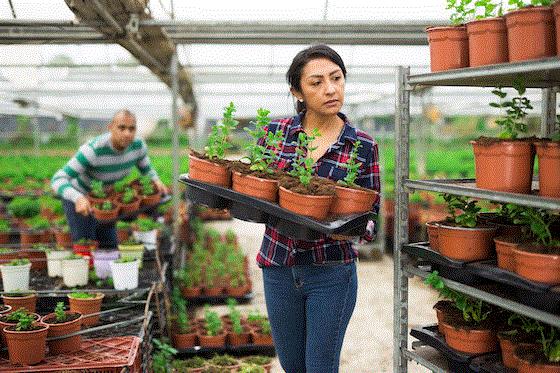
Wages have a dark side and a bright side. On the bad, unlike freight and fuel, there is no chance I will ever write, “Hey look! Labor costs have dropped 5% in the last few weeks!” I think the rate of increase will lessen as more and more cities and states hit that magical $15 mark, but it will never go backwards. And we continue to compete for talent with the likes of Amazon and Chick-fil-A.
But on the bright side, you can know and budget for your labor costs both short- and long-term. There should be no surprises, no deep freezes, no Gulf hurricanes or Middle East wars that drive labor through the roof.
One solution to all this? Efficiency, mechanization and automation. Such as via these tools growers wish they'd invested in soon.
Got your own thoughts on labor costs, or the costs of any other input? Let me know HERE.

Judy Laushman retiring from ASCFG
Talk about a career! Judy Laushman, co-founder and executive director of the Association of Specialty Cut Flower Growers (ASCFG) will retire at the end of 2023 after an impressive 35 years as the association’s only executive. She founded it in 1988 with Dr. Allan Armitage. The organization grew out of Dr, Armitage’s research on field-grown cut flowers at the University of Georgia. Since then, it has grown to nearly 3,000 members across the U.S., Canada and 19 other countries.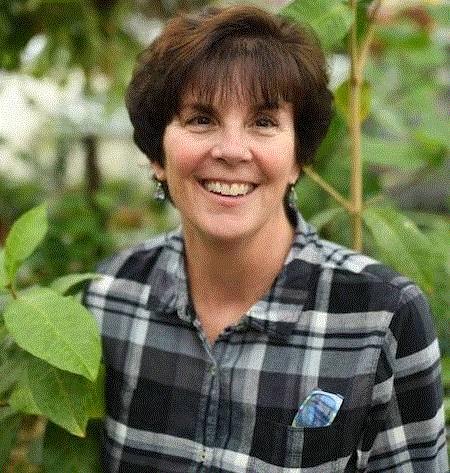
In 35 years, the organization has hosted countless national and regional educational events, both in person and online; sponsored academic and farm-based research; produced the only periodical dedicated to the cut flower industry, The Cut Flower Quarterly; and coordinated the ASCFG Cut Flower Trials under Dr. John Dole’s leadership. The ASCFG supports grower grants, scholarships, and several other programs designed to educate and unite specialty cut flower growers.
ASCFG Board President Val Schirmer of Three Toads Farm, Winchester, Kentucky, reports that the Board of Directors is nearing the end of its search for the next Executive Director, with an announcement anticipated prior to the Association's national conference, which will be held November 6-8 in St. Louis.

AAS awards “Whimsical Winners”
Gardening is fun, and gardens can be fun, too! That seems to be the motto of All-America Selections’ 2023 Landscape Design Challenge, the theme of which was “A Whimsical Garden.” AAS was hesitant about going out on the limb with the theme, they say, but their AAS Display Gardens “came through in a big way!”
For the challenge, AAS provided the gardens with recent AAS Winner seeds and plants along with variety markers (which for the first time included a QR code that sends users to the AAS website for that variety). The gardens had the option to also incorporate older AAS Winners in their design to illustrate the theme. Gardens were encouraged to generate publicity and hold events to share the story of All-America Selections and AAS Winners.
Gardens were divided into three categories based on the number of visitors per year:
Category I: fewer than 10,000 visitors per year
Category II: 10,001-100,000 visitors per year
Category III: More than 100,000 visitors per year
Judges were Helen Battersby, Garden Writer/Speaker and a GardenComm director; Ron Cramer, retired from Sakata Ornamentals and a former AAS president; and Barbara Wise, sales and marketing manager for container gardening supplier Crescent Garden.
Here are the three category winners:
Category I: Under 10,000 visitors per year
Mississippi State Univ-South Mississippi Branch Experiment Station, Poplarville, Mississippi
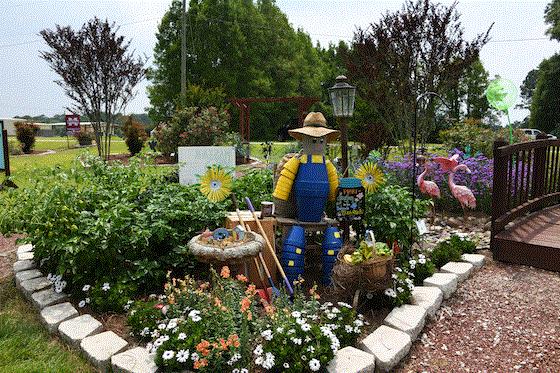
The AAS Display Garden at Mississippi State University’s South Miss Branch Experiment Station is a whimsical garden with a bridge, gazebo, and ornamental hardscape features.
After brainstorming, the garden staff agreed that a wacky, silly, odd, and overall fun approach would be the way to go to interpret this year’s theme. Going back to the 16th-century origin of the word “whimsical,” they learned that it started with “whim-wham”; a noun meant to describe an ornamental object or trinket. This “whim-wham” approach led to the integration of many ornamental hardscape features, such as a small bridge over a dry creek bed and a gazebo used to showcase AAS Winners in hanging planters and traditional garden plantings.
Category II: 10,001-100,000 visitors per year
Noelridge Park Gardens, Cedar Rapids, Iowa
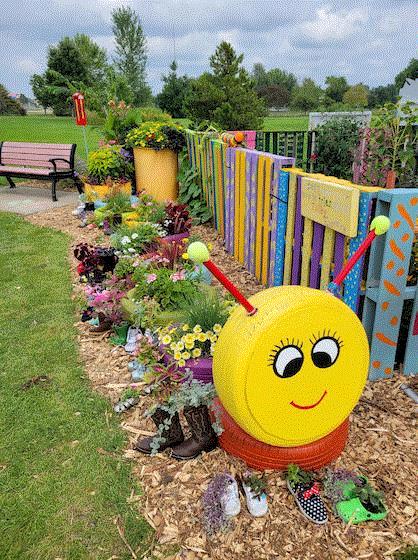
The Shoe-Bee-Dew! A Whimsical Garden Walk at Noelridge Park was inspired by a desire to include the public in every step along the way. The park invited the public to donate used shoes, which were then planted with AAS Winners and other plants chosen based on their look or name. A meandering path was created through the garden, allowing visitors to get close enough to see the special surprises tucked here and there, read plant tags, and identify which local celebrity’s shoes were on display. For instance, they planted fireman’s boots with Red Ember Cayenne Pepper, and winter boots with Icicle Eggplant. There was also this fun tire caterpillar (above).
Category III: over 100,000 visitors per year
Toledo Botanical Garden Metropark, Toledo, Ohio
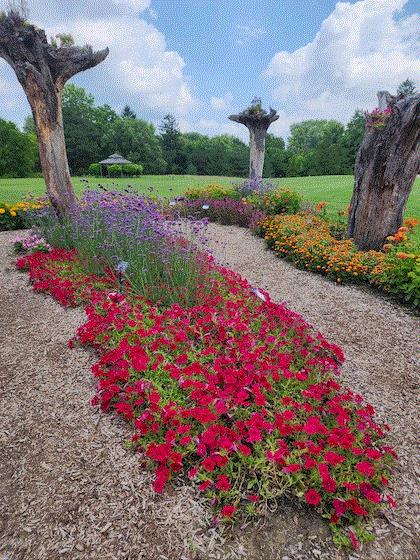
Toledo Botanical Garden created a whimsical garden called Whimsi-land, where visitors enter through a copper archway featuring a moon and stars display. A walk along the path lined with brightly colored flowers leads to a pool where one might catch a glimpse of the topiary water dragon, Finnegan. Inspired by the Juneau, Alaska botanical garden, Toledo Botanical Garden staff flipped three downed trees upside down to create planters. The root flares of the trees were filled with flowering annuals, including AAS winners.
Congrats to all three and to all the other finalists and participants!

Therapeutic Gardens get $7,500 in grants
Along with being fun, gardens can be therapeutic, and to that end, the National Garden Bureau and program sponsors American Meadows, Ball Horticultural Company and Sakata Seed America have awarded five therapeutic gardens grants and in-kind donations totaling more than $7,500. This announcement marks the 10th year that National Garden Bureau has provided much-needed resources for worthy therapeutic gardens. This funding allows these gardens to continue, and even expand, their good work for deserving clients. The five gardens are:
Insight Garden Program, San Gabriel, California
Insight Garden Program’s mission is to facilitate innovative gardening and landscaping training so that people in prison can reconnect to self, community and the natural world. Currently, they are in 11 prison yards across California, like the one below.
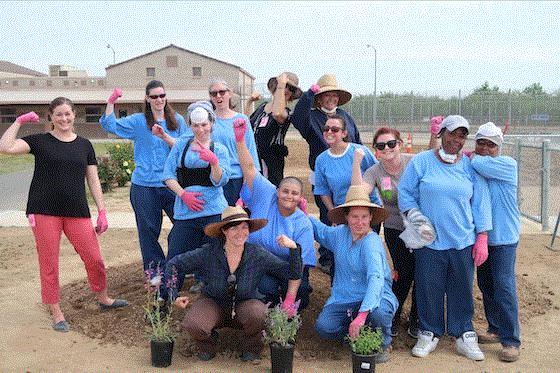
UT Gardens Horticultural Therapy, Knoxville, Tennessee
The University of Tennessee (UT) Gardens is a 10-acre garden utilized by students and the community. This horticultural therapy program launched in 2012 and has served over 9,000 people to date.
Care Plus Horticultural Therapy, Paramus, New Jersey
The program at Bergen New Bridge Medical Center is designed for adult residents with multiple and complex challenges that require a regular regimen of care and attention by qualified health professionals.
Edgerton Hospital Healing Garden, Edgerton, Wisconsin
Edgerton Hospital and Health Services has maintained a 3-acre healing garden for 12 years, intending to provide passive and active horticulture engagement for patients, staff, visitors, and the public.
Skyland Trail Horticultural Therapy Program, Atlanta, Georgia
Skyland Trail provides residential mental health treatment for adults and teens. Horticultural therapy, including expert-led groups in the gardens and greenhouse, is a critical component of their whole person approach to wellness.

Erin is right! We ask … but do we listen?
I find it humorous when the cashier at my grocery store asks, “Did you find everything you were looking for?” One time I answered truthfully, “No, as a matter of fact, I did not.” I forget what it was they were out of, but I asked if she could get it for me. Of course, she could not.
I don’t know why they bother asking.
This next item made me think of that. It comes from Erin Schanen, the creator of The Impatient Gardener blog, YouTube channel and Instagram account. Erin also writes a weekly newspaper column on gardening. She contributed an item to this week’s BuZZ! newsletter in which she talked about achieving “what feels like something akin to ‘platinum status’ at a couple of garden centers close to me.” Erin explains that, “purely by virtue of spending a lot of money and visiting frequently, the key employees—the ones who do the ordering—know me.”
But Erin said something that struck a chord with me:
For years I’d heard advice that suggested if I told my garden center what plants I was looking for with some notice, they would probably be able to get them for me. But such requests were typically greeted with shrugs, or casual references to “looking into it” with no follow up and my search for specific plants would continue.
Although I realize now that garden centers have limitations on minimums and where they can order from, I always thought it was strange that these requests were mostly blown off. Companies spend a lot of money on surveys and demographic research to pinpoint exactly what their customers want, and yet when garden centers are told exactly what customers want, the requests often go ignored.
Great point, Erin!
I don’t know how your garden center operates, but it seems to me that if a customer asks for something, you should not only listen, and see if you can get it, but also 1) follow up with the customer if you can’t get it—and explain why— and 2) if you can get it, get several, or a dozen, or whatever, to see if more customers would want it.
Of course, I know your garden center already does this. I’m speaking to the other guys, the ones who can’t be bothered.

This Thursday: Biologicals for the Root Zone
You’ve got just a few more days to sign up for our next great webinar, Building Better Plants with Biologicals. In it, you’ll learn all you need to know about the use of beneficial microorganisms in growing media.

It’s slated for this coming Thursday, October 19, at 1 p.m. Eastern/Noon Central.
Why should you consider using a potting mix containing beneficials? What will it do for your crops? My guest expert will be Nathan Wallace Springer, horticultural specialist for the Southeast U.S. for Premier Tech Horticulture. Nathan, a Premier Tech team member since 2020, has a Master of Science degree in Horticulture from Auburn University. He is an expert in hydroponic and aquaponic greenhouse crops, LED lighting and plant nutrition, and he can answer all your questions about how beneficial microorganisms can improve your crops, including:
- Improved fertilizer uptake and reduce fertilizer costs
- Improved water uptake, increasing drought resistance
- Increased resistance of plants to stress
- Increased root mass, flower production, plant size and yield
Nathan will discuss the features, benefits and ROI on several popular beneficial media additives, including Bacillus pumilus and mycorrhizae.
Click HERE to sign up now!
Finally …
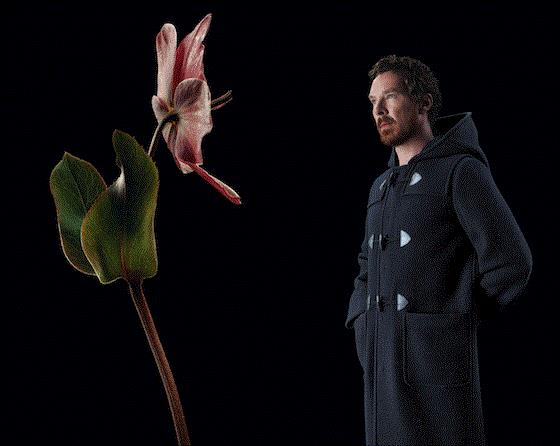
HERE IS A FUN PIECE from fashion brand Prada about their new fall/winter 2023 campaign, “In Conversation with a Flower,” which launched last month.
Says Prada on its website:
Beauty, care, love. Prada’s exploration of these eternal, timeless values of humanity—universal emotions—inspires both the Fall/Winter 2023 collections and campaigns. They are brought to life through the metaphor of flowers—both totems and gestures of tenderness and affection—here reimagined to human size, a scale that suggests otherworldly emotions. Those flowers interact with five actors, all global stars—Benedict Cumberbatch, Hunter Schafer, Kodi Smit-McPhee, Letitia Wright and Li Xian—a roster of cinematic idols reflecting Prada’s long-standing relationship with cinema as an expression of cultural ideas and ideals.
As part of the promotion, limited-edition silver cans with the Prada logo containing marigold, daisy and sunflower seeds were available at flower kiosks and various retail destinations in Milan, London, Paris, New York, Dubai, Seoul, Hong Kong, Beijing, Shanghai, Tokyo and several other cities in September.
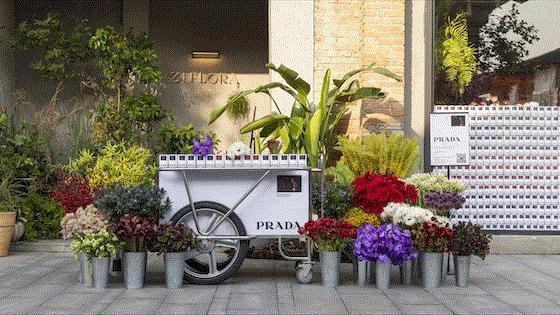
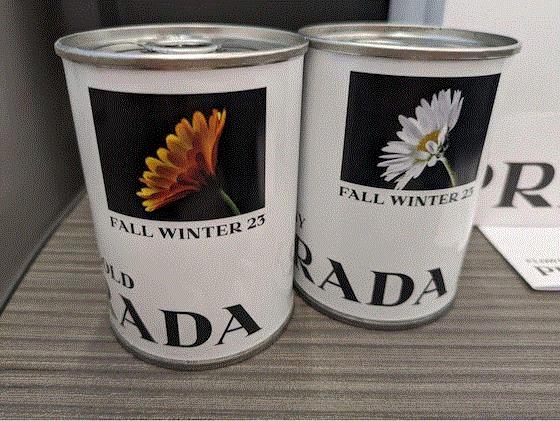
Three things about this:
First, I LOVE when other industries see the value in our products and celebrate it.
Second, I would LOVE to know who provided the seed for the promotion. Anybody want to come forward? Email me HERE.
Third, I wouled LOVE one of those cans for my office horticulture collection! Can anyone hook me up?








Feel free to email me at beytes@growertalks.com if you have ideas, comments or questions.
See you next time,

Chris Beytes
Editor
GrowerTalks and Green Profit
This e-mail received by 26,544 loyal readers!
Thanks to my loyal sponsors, who help me reach the 26,439 readers of Acres Online in more than 60 countries. Want to be one of them (a sponsor, that is)? Give Kim Brown a shout and she will tell you about our many advertising opportunities.